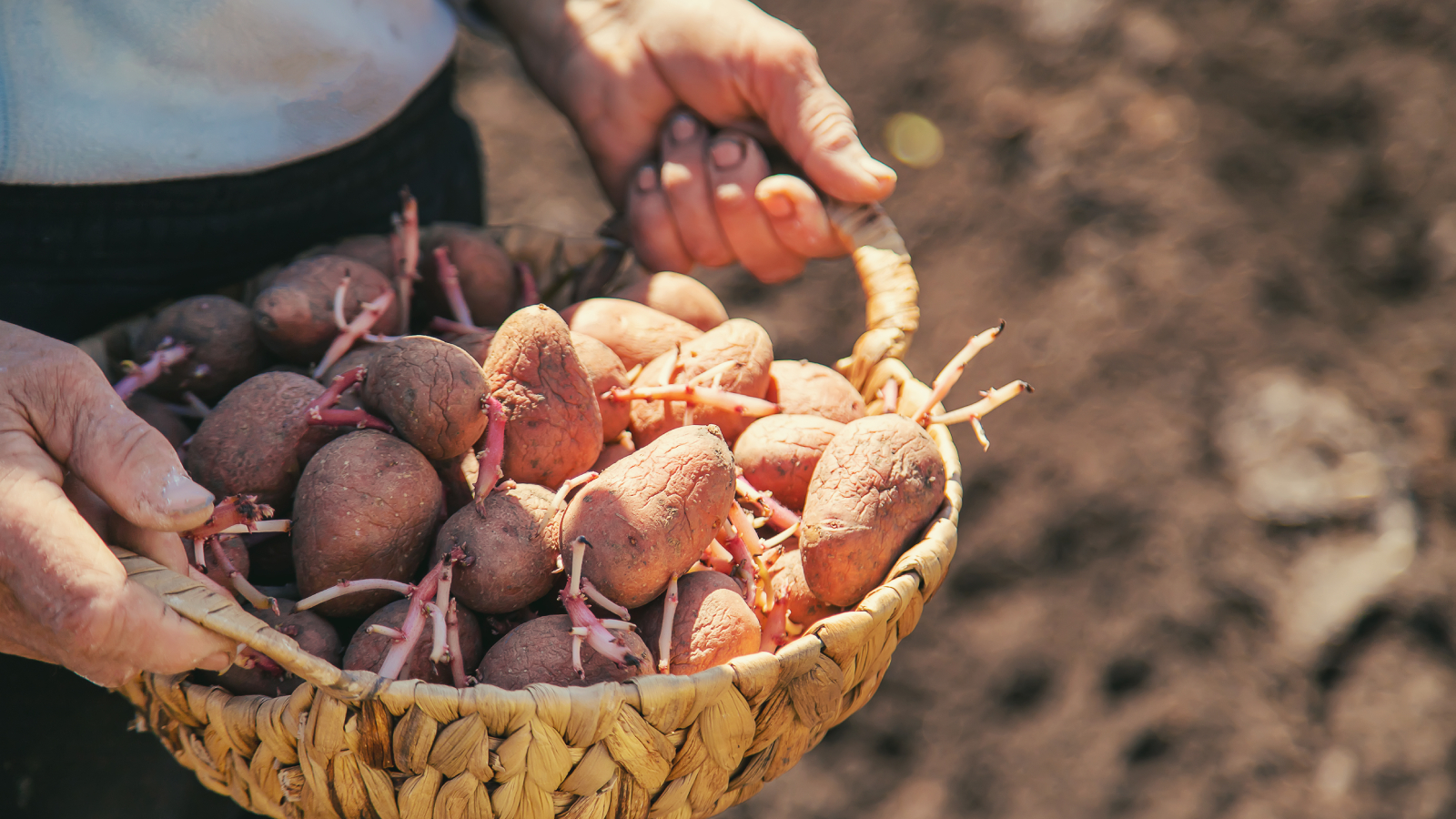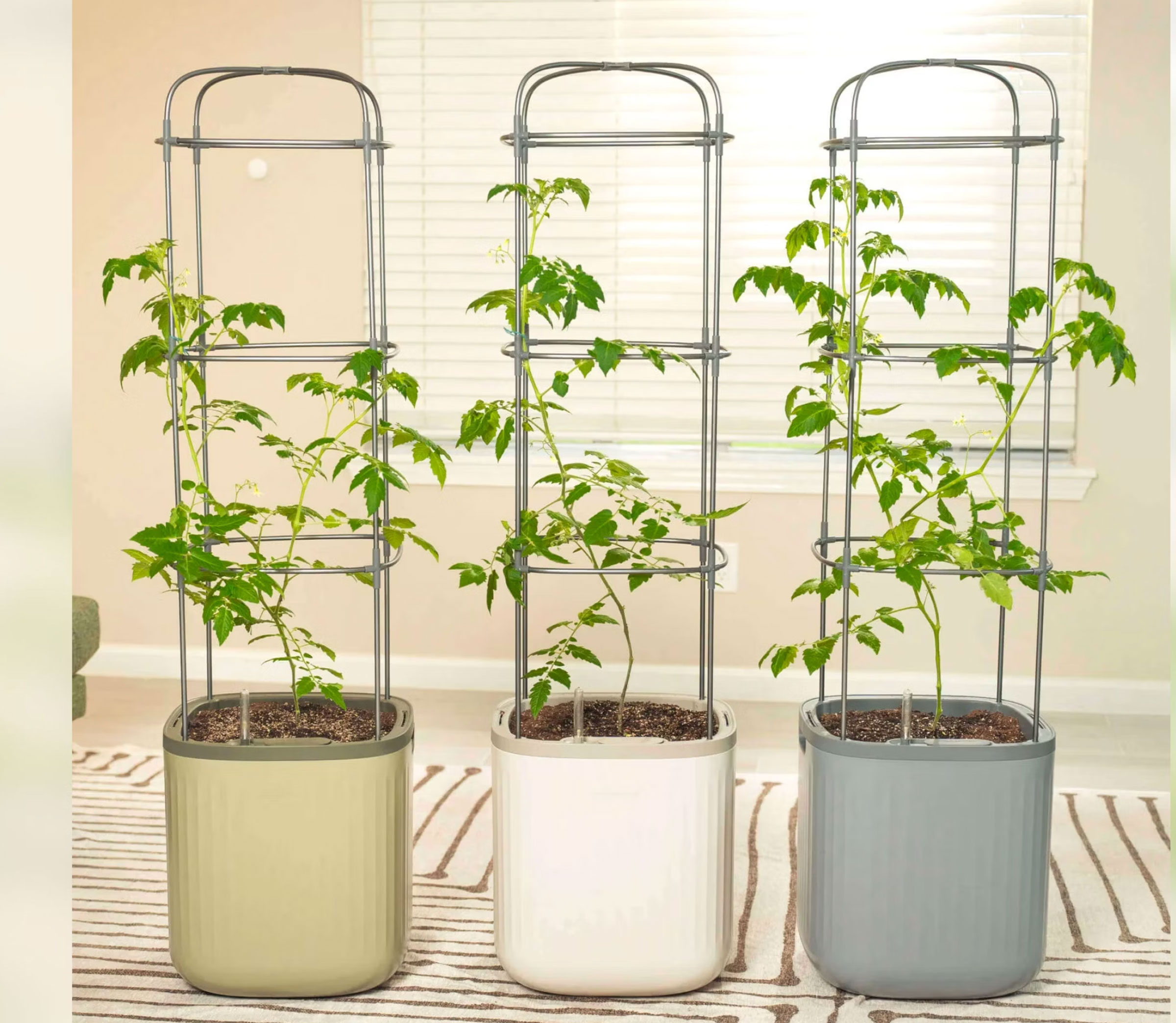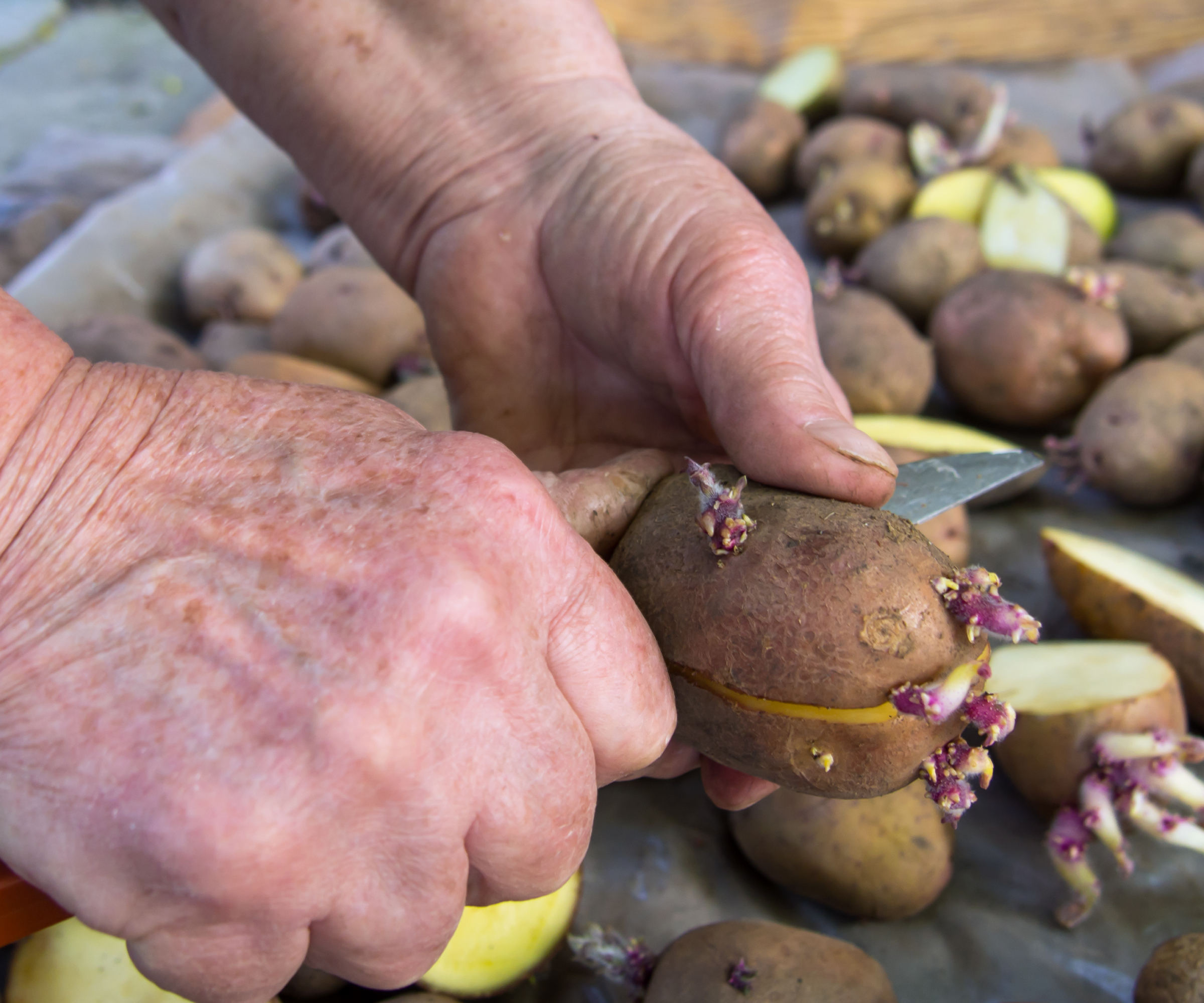Can You Grow Potatoes From Potatoes You Bought At The Grocery? Let’s Give It A Try!
Can you grow store-bought potatoes? The answer is yes! With a little preparation, you can get a nice harvest from potatoes that have sprouted in your pantry.


Amy Draiss
Do you know how to grow potatoes from potatoes purchased at the grocery store? Gardeners often buy seed potatoes to start their plants. These aren’t seeds but actually small tubers. You can purchase them in many varieties but perhaps there is a kind you just love at the supermarket and you simply want to try that kind.
But, can you grow potatoes from store bought? Growing potatoes from produce spuds can be done. I know, I’ve done it. Sometimes that is the easiest way to get a type of tater you prefer and they make a great addition to a vegetable container garden.

This self-watering planter can support growing potatoes, tomatoes, and other veggies that need a larger pot. Find it in the Gardening Know How Shop.
Can You Grow Potatoes From Potatoes You Bought At The Store?
Potatoes grow from the eyes. Those are the little things that look like tater belly buttons. The eyes are the growth points in a potato and each has the potential to produce a plant. However, if you really want to be sure a plant grows, make sure each spud has at least a couple of eyes. So can you grow potatoes from store bought? It is best to grow potatoes from seed potatoes as they have been carefully selected by growers for disease-resistance, but it is possible to grow from a grocery-bought spud. The best ones to choose are slightly dirty because the dirt actually helps keep the potato fresh and it will last longer.
Since you have no way of knowing when your spud was harvested, you can’t pick the freshest but make sure it isn’t wrinkly, damaged, or diseased. You also do not know if your potato was exposed to disease. When planting from store-bought tubers, plant potatoes in containers for the safest result. This will avoid introducing disease to the rest of your garden. This is especially important if you grow other nightshade crops like tomatoes. Any disease the potato introduces can be transferred to your other nightshade crops.
Preparing Your Potatoes

- You do not need to wash the potato to remove dirt, but it is a good idea when using supermarket spuds. This can remove any surface contaminants.
- Use a nice sharp, clean knife. Sharp cuts damage the tuber less. And a clean knife will avoid introducing pathogens. If the potato is very small it can be planted whole, but larger tubers need to be cut up.
- Cut the potato up into pieces with at least 1 good eye.
- Lay out newspaper and lay out the pieces. Allow them to dry for 3 days. This will callus over the cut site and help prevent rotting.
Planting Your Potatoes

- Soil is one of the most important components in plant growth. In the case of potatoes, they like well-draining vegetable garden soil with a pH between 5.0 and 5.2. A good soil cut by half with compost is an ideal medium for container plants. If you opt to plant your grocery store spud in the ground, loosen the soil well and incorporate some compost to amend the soil.
- If you are planting in the ground, dig a trench 6-8 inches (0.6-0.67 cm.) deep. If you are using a container, line the bottom with a few inches (.25 cm.) of soil.
- Space the potato pieces at least 10 inches (.83 cm.) apart.
- Fill around the spuds with a few inches (.25 cm.) of dirt.
- Water lightly. The soil should just be moderately moist.
- As shoots come up, fill with another layer of soil to just about cover the shoot.
- Water sparingly. The most important watering period is when the plants are flowering. At this point they need at least 1 inch (2.54 cm.) of water per week.
- As the tubers begin to mature, the foliage will yellow and die back. At this point you can slowly reduce watering. You can harvest when all the foliage is completely brown and dead.
- One week before harvesting potatoes, stop watering completely.
- Gently sift through your dirt to unearth your potatoes.
- Do not wash the potatoes, simply brush off excess dirt. Then store them in a cool dark location.
Potatoes are a great crop to try if you have never grown vegetables before. They are easy to grow and can be a rewarding garden experiment for the children in your life. Your homegrown taters will be delicious and you can even use them for some fun potato crafts!
Frequently Asked Questions
Can I use regular potatoes as seed potatoes?
You can use any potato as a seed potato. The only issue is you cannot be sure the tuber has been disease free.
How many potatoes can you grow from one potato?
The number of plants depends upon the number of eyes. And not every eye will sprout.
Do potatoes need to sprout before planting?
Sweet potatoes need to sprout or develop slips before planting. It is not necessary for other varieties, but if you get a sweet potato slip to sprout before planting, you will be just one step ahead.
More Vegetable Gardening Inspiration
- Want a nice vegetable container garden on a budget? Try growing vegetables in a 5-gallon bucket for a cost-effective and efficient take on the tradition veggie garden.
- Explore some more cheap container vegetable gardening ideas to save space and money while still reaping abundant crops!
- Our ultimate container seed collection in the Gardening Know How Shop has everything you need to get started on that veggie garden.
- Learn 15 expert tips for planning your vegetable garden this year. A garden is only as good as its plan, so don't miss any important steps!
- Want more tips, tricks, and inspiring ideas delivered to your inbox? Sign up for the free Gardening Know How Newsletter.
This article features products available from third-party vendors in the Gardening Know How Shop.
Sign up for the Gardening Know How newsletter today and receive a free copy of our e-book "How to Grow Delicious Tomatoes".

Bonnie Grant is a professional landscaper with a Certification in Urban Gardening. She has been gardening and writing for 15 years. A former professional chef, she has a passion for edible landscaping.
- Amy DraissDigital Community Manager